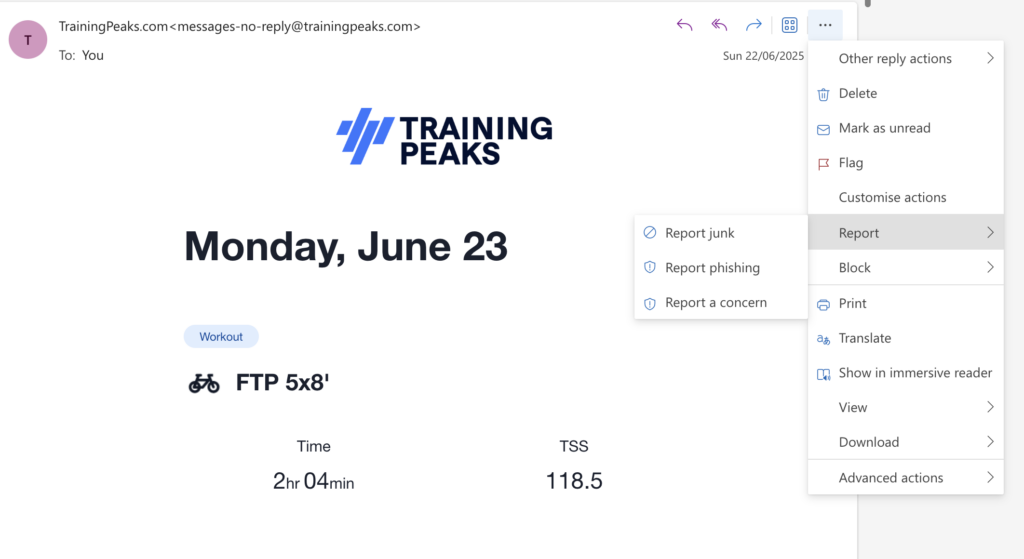Deliverability
What is IP reputation and how do you improve it?

Deliverability

Internet Service Providers (ISPs) judge your trustworthiness as harshly as your in-laws at your first dinner. That’s because ISPs are constantly on patrol for fraudsters and phishing enthusiasts trying to prey on unsuspecting inboxes. This means your Internet Protocol (IP) reputation determines whether or not your emails are blocked or sent to the spam folder.
And for email marketers putting hours into crafting the perfect newsletter content, it would be devastating to find out that your online activity has raised red flags preventing your audience from receiving your content. So, with your IP reputation at stake, let’s look at ways to improve it to ensure that that does not happen.
IP reputation refers to the trustworthiness of an IP address that sends emails, as judged by email service providers such as Gmail, Outlook, and Yahoo. It’s a major factor in determining whether your emails land in the inbox, spam folder, or get blocked altogether.
Try thinking of it as your sender credit score – the better it is, the more likely your emails will be delivered successfully. Each IP address will have a reputation score between zero and 100.
IP reputation measures the trustworthiness of the server sending your emails, while domain reputation reflects the credibility of your brand’s domain name. Both impact email deliverability, and both have a say in your sender reputation, too.
| IP reputation | Domain reputation | |
| Definition | Measures the trustworthiness of a sending IP address. | Measures the reliability of a specific domain |
| What it tracks | The sending IP address | The sending domain name (e.g., mailjet.com) |
| Who owns it | Tied to your ESP or dedicated server | Tied directly to your brand or organization |
| How it’s used | Used by email providers to assess server trust | Used to assess brand trust and sender consistency |
| Scope | More technical and infrastructure-based | More long-term and content/engagement-based |
Seeing as your IP reputation impacts whether or not your emails land in subscribers’ inbox or not, choosing the right setup is important. Now, there are two different types of IPs: dedicated and shared.
Usually, email services group you with others that are similar in size or type of business when you use a shared IP.
When ISPs scan the internet to see a given IP address’s risk score, they’ll make a quick judgment call on whether the users from that address behave in the name of good or evil.
Having a solid IP reputation means your ISP recognizes that your IP address has good intentions, unlike those of bots, fraudsters, or cybercriminals. If your activity shows illegitimate browsing behavior, your IP address could be flagged.
Basically, if you’re an email sender, you should do everything to make your IP reputation as sterling as possible (and obviously don’t engage in suspicious activity that could be flagged). You want to ensure your audience receives your emails and that your online behavior doesn’t land you on the blocklist.
Six major factors can impact your IP reputation score, and it’s important to be familiar with all them:
Flagging an email as spam is a direct complaint by the recipient. The recipient can flag any email with a simple click thanks to the “mark as spam” button present in most ESP interfaces.
The number of spam complaints has a high impact on IP reputation score. To avoid any negative impact on your deliverability, incorporate practices to keep your emails out of the spam folder.

If you’re a Mailjet client and want more details about managing spam complaints, you can refer to our documentation page about various email status.
If an inbox is temporarily full or unavailable, an attempted delivery leads to a soft bounce. On the other hand, if the email address is misspelled or does not exist, this is considered a hard bounce.
You’ll want to avoid this as it may indicate that the sender is not keeping their contact lists cleaned and up-to-date.
Spam traps – also called honeypots – are email addresses made to trap spammers. They can be created purposely. However, old email addresses can also turn into spam traps.
The administrators of these traps look for situations where no opt-in has ever been confirmed. So, they know that every email received has not respected best emailing practices or sender requirements, as implemented by Google and Yahoo, as well as Microsoft Outlook. Purchased or rented lists systematically contain a significant number of these spam trap email addresses, which is why Mailjet prohibits you from using third-party lists.
Yahoo’s Senior Director of Product, Marcel Becker, Google’s Director of Product Anti-Abuse and Safety, Anu Yamunan, and Sinch Mailgun’s Vice President of Deliverability, Kate Nowrouzi, walked through these key ESP sender requirements.
IP addresses can be grouped into IP networks and the reputation of the whole network can directly impact your individual IP reputation.
Think about it this way: If your IP address is like your home address, then your IP network is your neighborhood. And unfortunately, it’s possible to live in a “bad neighborhood.”
Your IP network can hurt your IP reputation sender score when enough bad actors are sending spam, fraud, or committing cybercrime using IPs that are part of your network. Your IP address reputation might get even more damaged if it’s part of a botnet or network of computers infected with harmful malware.
It’s important to keep in mind that this score isn’t only based on one or two incidents. In fact, your entire IP reputation history is taken into consideration when ISPs calculate your IP risk score. And if we’ve got you questioning every internet search you’ve ever made, we apologize…
The age of the IP is also closely linked to its history. Older websites’ domain names and IP addresses are considered more stable than newer ones. So, using or acquiring an older domain name will give your IP a better reputation across the internet.
If you perform an IP reputation check and find that your score isn’t favorable, you can implement the following practices to improve your IP reputation:
If you’re wondering, “How can I check my IP score and improve it?” The first step is to find out which blocklists have identified your IP address as fraudulent.
Once you know which blocklists have your IP address, navigate to those sites, and they should have the steps you need to follow to delist yourself. Remember that successfully appealing to delist yourself usually takes about 24 hours.
Unfortunately, you’re not out of the woods once you’re off those lists. You need to be extra vigilant to keep yourself and your IP address from returning to those blocklists. It gets harder to delist yourself each time your IP score is negatively impacted.
If you’re an email marketer, giving your email list some TLC will help ensure you’re not mass sending your marketing messaging to email inboxes that won’t receive them. You can do this manually or with an email address validation service. Plus, keeping an eye on your email list might help you catch potential spam traps or email addresses that can trigger negative reviews or spam replies to your content.
This is when you slowly increase the volume of emails you’re sending to show anti-spam monitors your cadence and establish your reputation. The recommended strategy is to send 300 emails on day one, adding 20% every day until you reach 100% of your contacts. Doing this will maximize your potential to have a positive IP reputation. Using a warm-up strategy will also influence your sender score and email reputation. Win-win!

Email authentication is the process of verifying the legitimacy of an email sender and the integrity of their message(ing). The three standard email authentication protocols are:
They work in conjunction to validate a sender’s identity, prevent email spoofing and phishing attacks, and improve overall security and email deliverability.
Senior Product Manager, Natalie Lynch, explains how to validate and authenticate a sending domain in Mailjet, a process essential for improving email deliverability and protecting your brand’s reputation.
In our recent email deliverability study, Road to the Inbox: Navigating email deliverability in 2025, we asked senders to rate their understanding of their sender reputation on a scale of 0 to 10.
25.5% claimed to have a high understanding (8 to 10). More than 42% of senders rated their understanding of sender reputation in the middle (4 to 7) and 32% rated it low (0 to 3).
Only around 25% of respondents feel confident about their understanding of sender reputation. So, what about the rest? Are there ways to learn more about how mailbox providers like Gmail and Yahoo view your email program?
There is indeed: Gmail has Google Postmaster Tools. Outlook has Microsoft’s Smart Network Data Services (SNDS), and Yahoo Mail/AOL has its Sender Hub.
Some other tools you can use to periodically ensure that your reputation isn’t hindering your email marketing efforts include:
As you can see, there’s a broad scope of things to consider when calculating your IP reputation. One of the most efficient and effective ways to stay on top of your IP reputation is to manage your email delivery rate. And luckily for you, we’ve got the tools to help you optimize your email reputation.
Mailjet will arm you with the ability to accurately monitor the metrics that tell the story of how your audience engages with your material. As an email service provider, we can help you track your:
Once you’ve released some email marketing content into the world, Mailjet’s platform can help you analyze this data to measure its performance. Then you can make an educated decision on what elements to change to improve your content’s effectiveness.
Improving your email marketing content is a marathon, not a sprint. We recommend getting into the mindset that you should constantly be adjusting. When you think you’ve nailed the perfect combination of excellent copy, branded images, and powerful templates, use A/B testing to keep tweaking and improving.
Want to learn more about email deliverability? Download our ebook, “Landing in the inbox: Email marketing deliverability basics”.